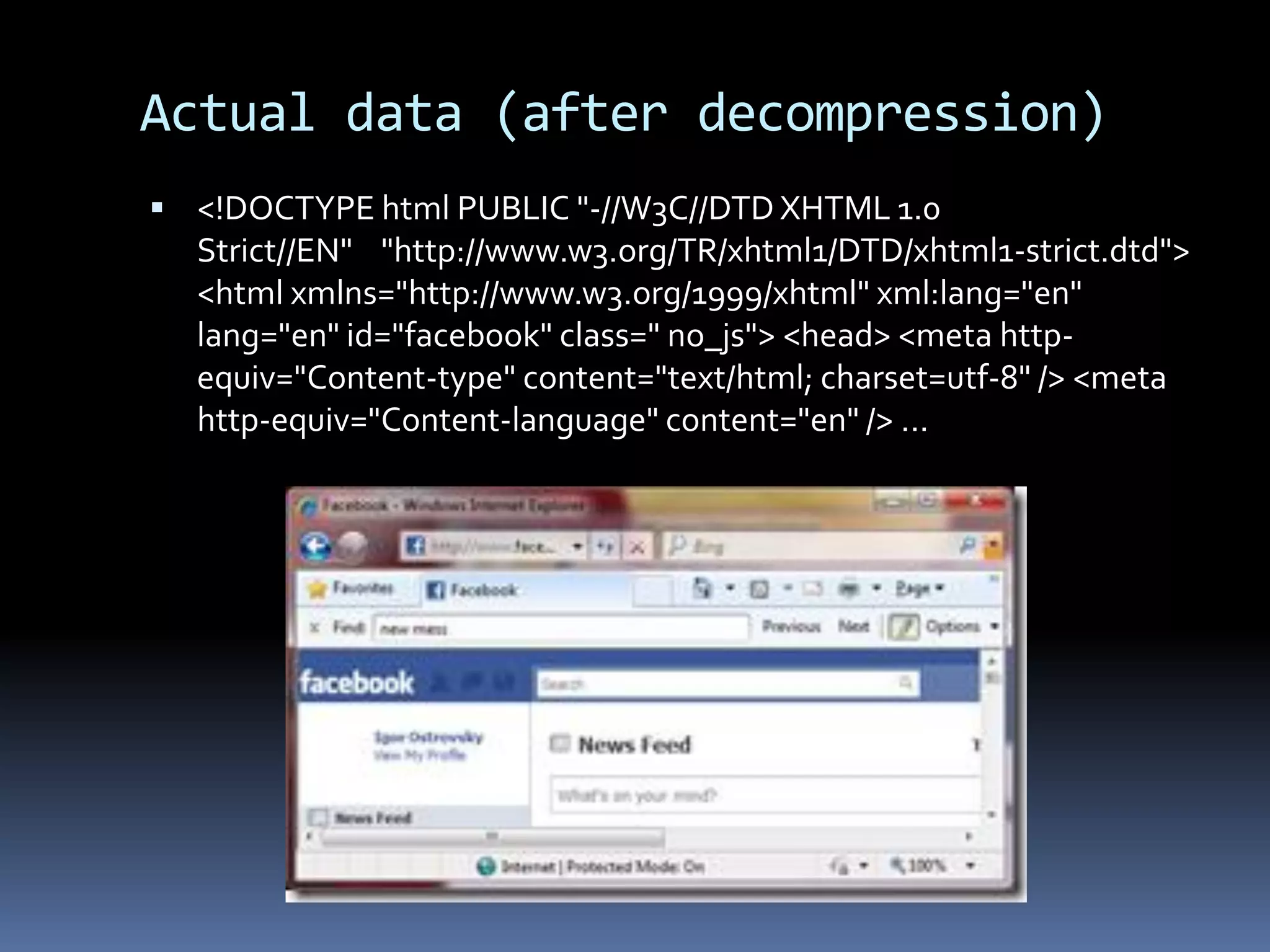This document discusses computer networks and the TCP/IP model. It begins by defining what makes a computer network and some common uses of networks like resource sharing, information sharing, communication, and distributed processing. It then explains the layers of the TCP/IP model including the network access, internet, transport, and application layers. The rest of the document details topics like how networks are physically connected, the network and data link layers, wired and wireless networking, switching vs hubs, IP addressing and subnets, ports and sockets, and finally provides a high-level overview of the process that occurs when visiting a website.
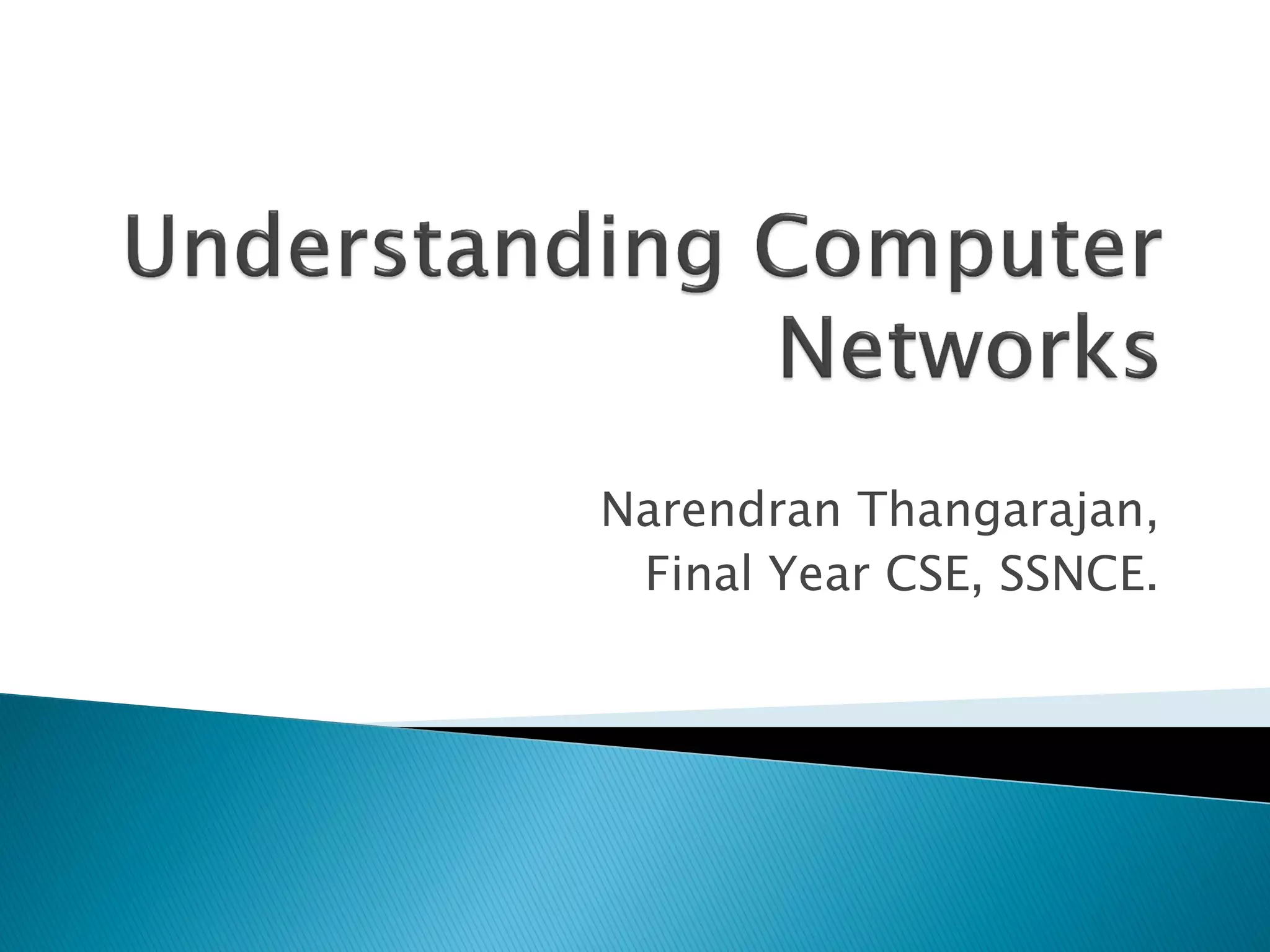
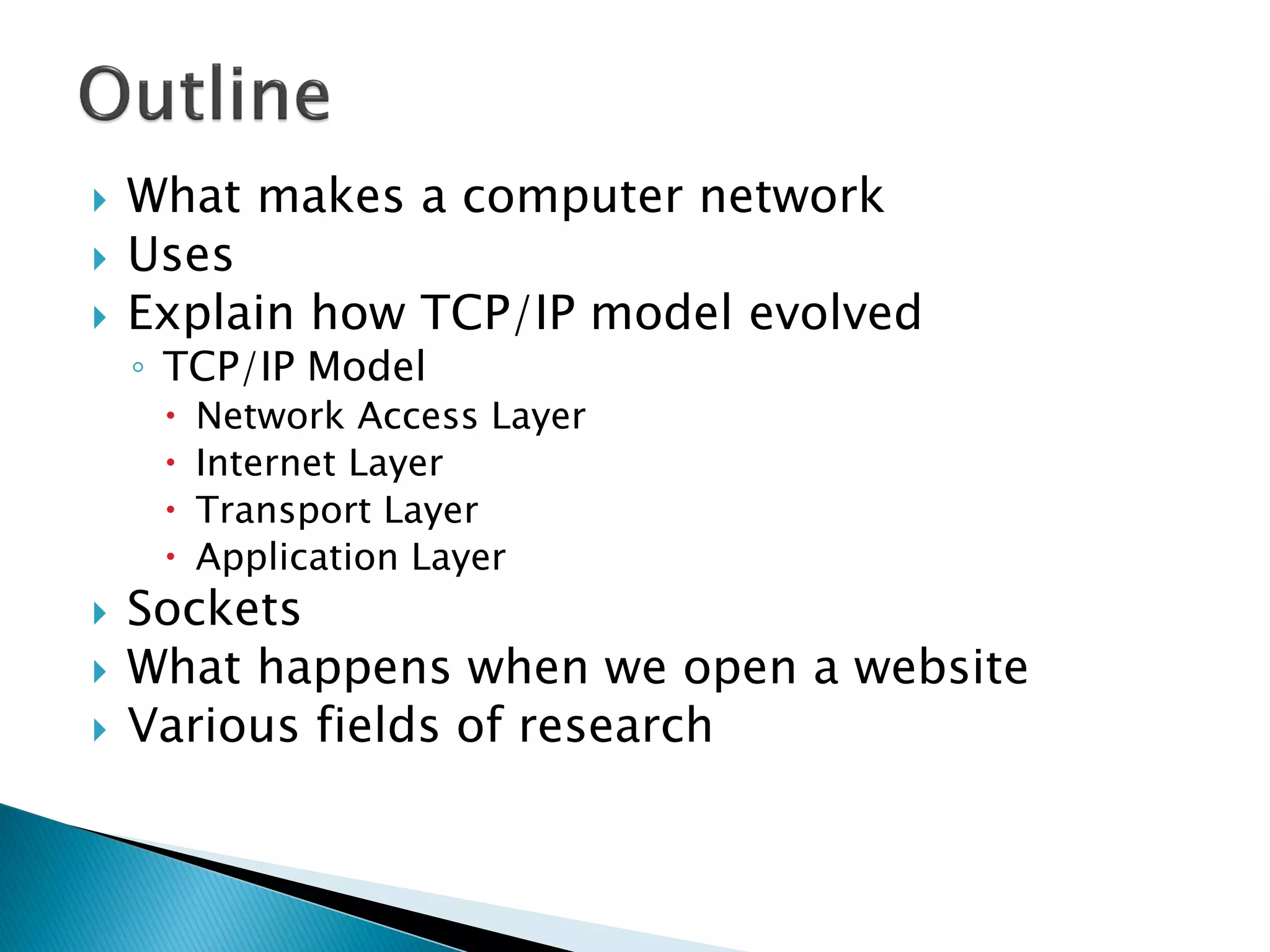
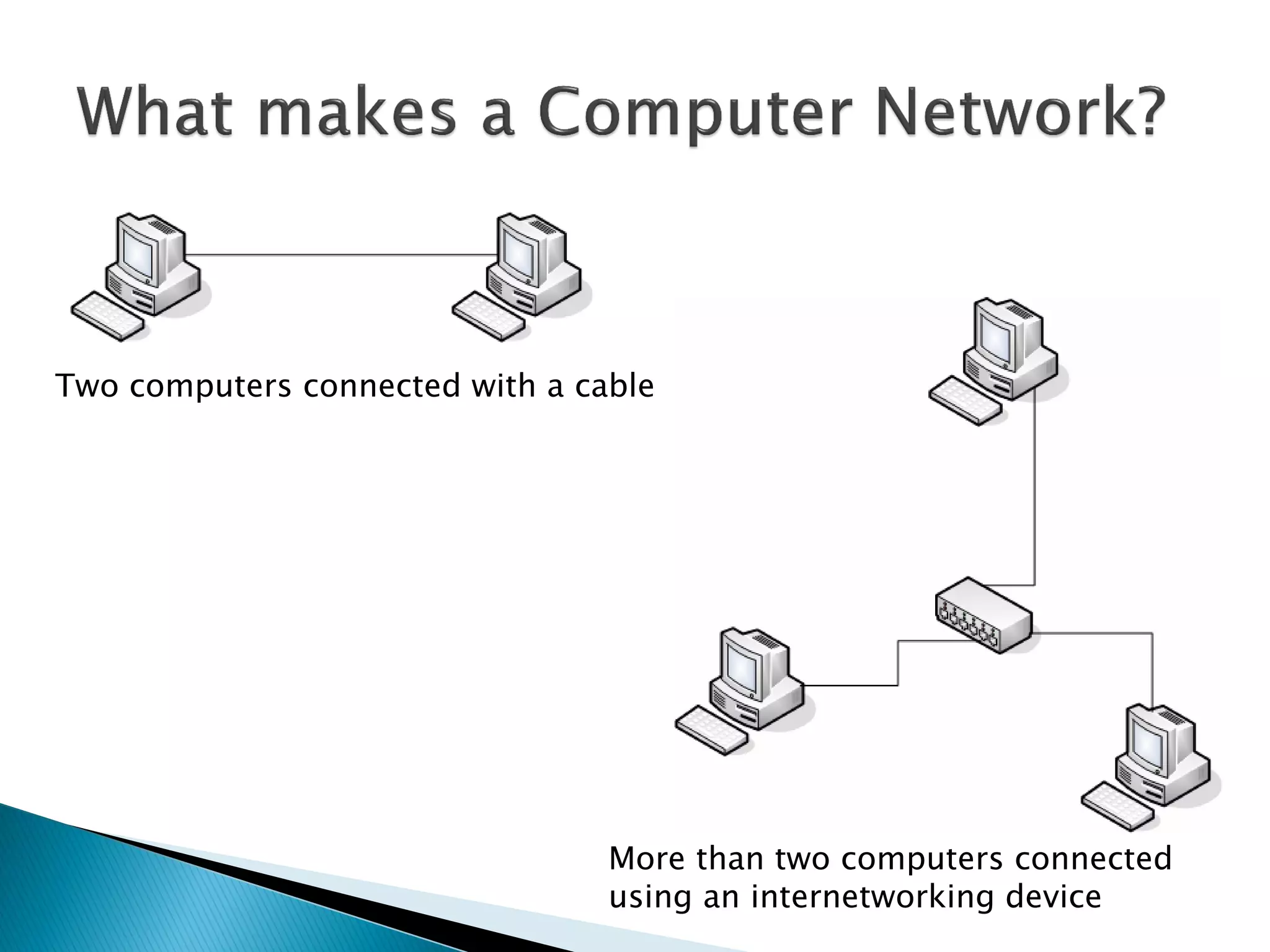
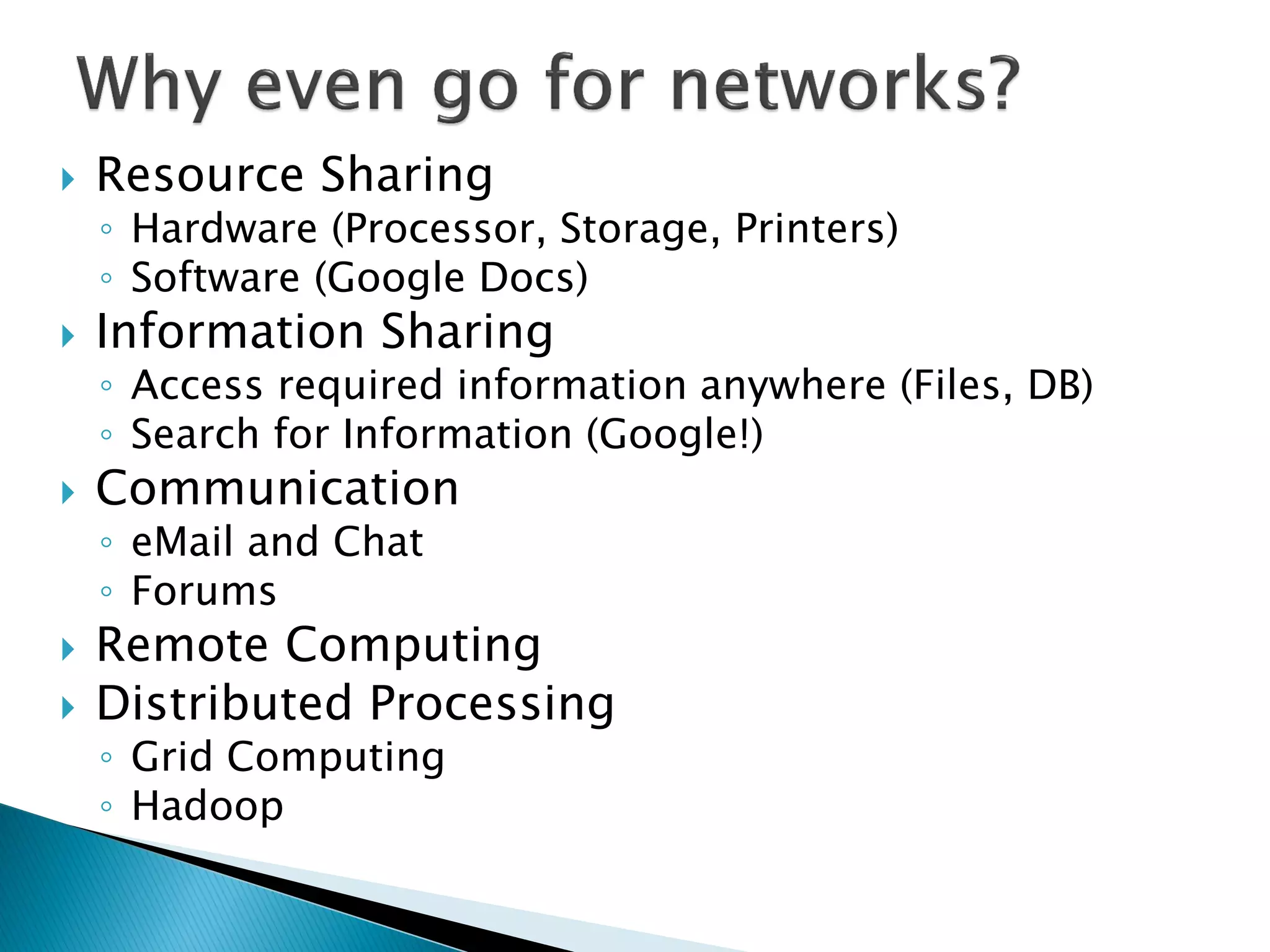
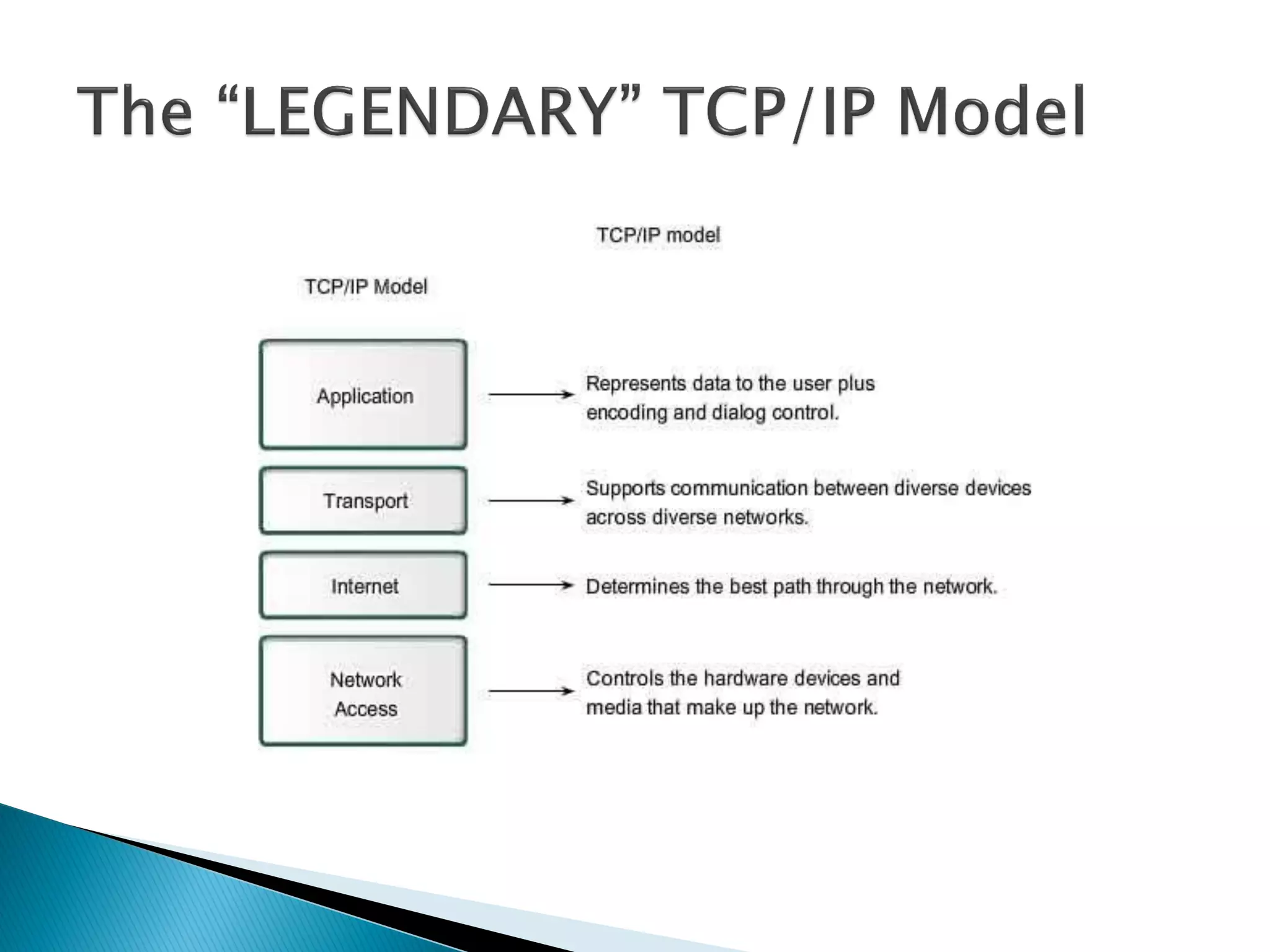
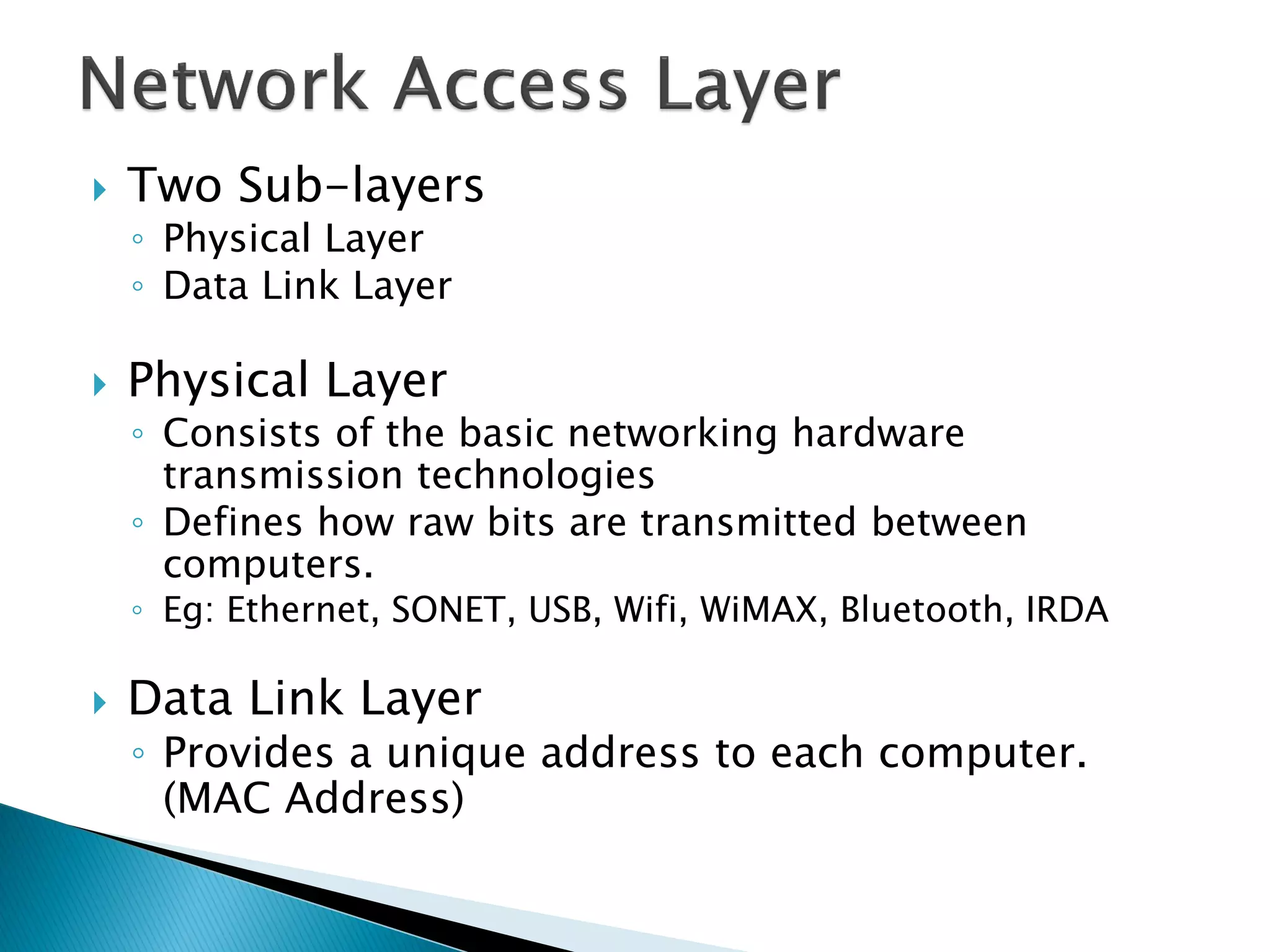
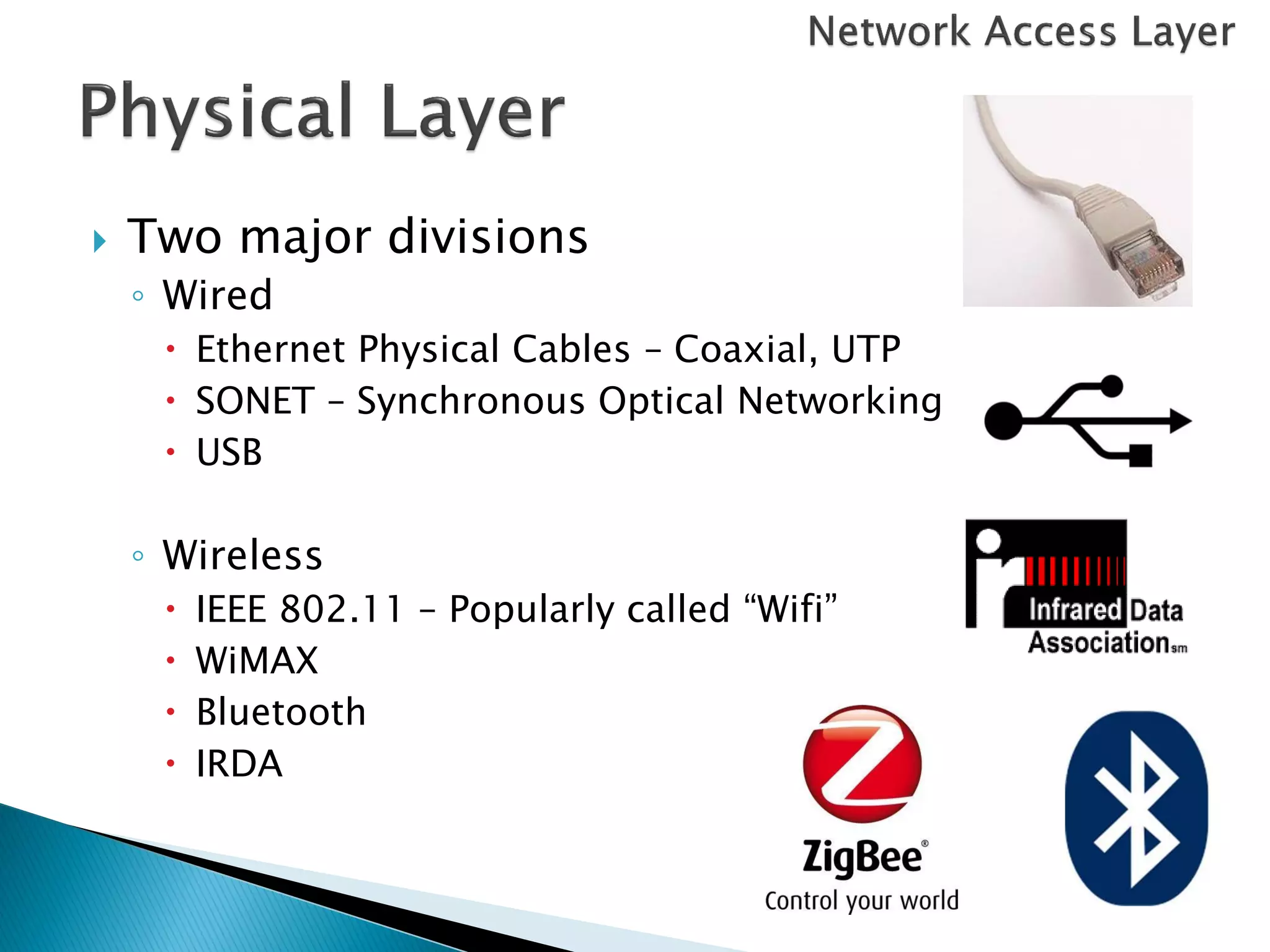
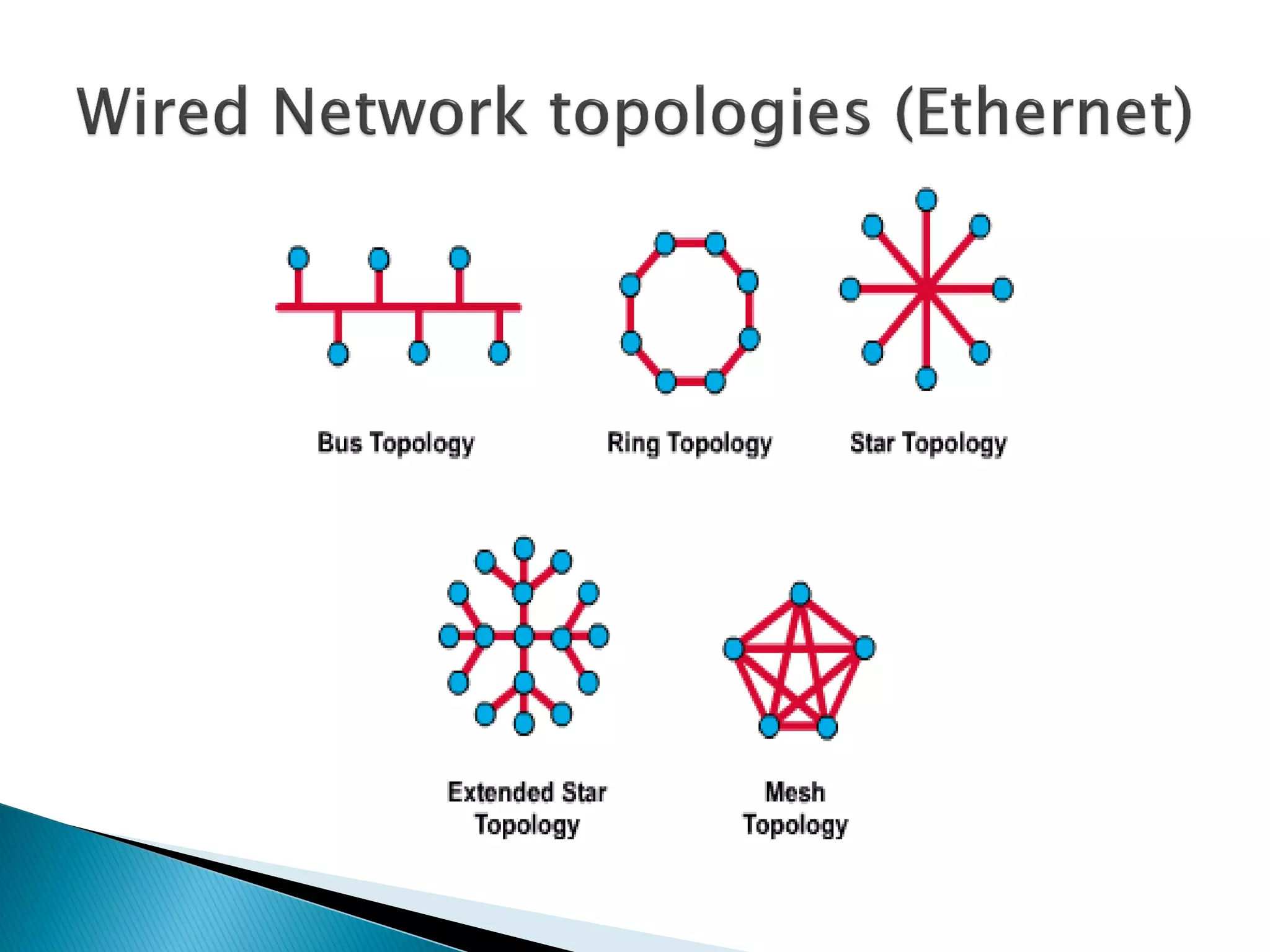
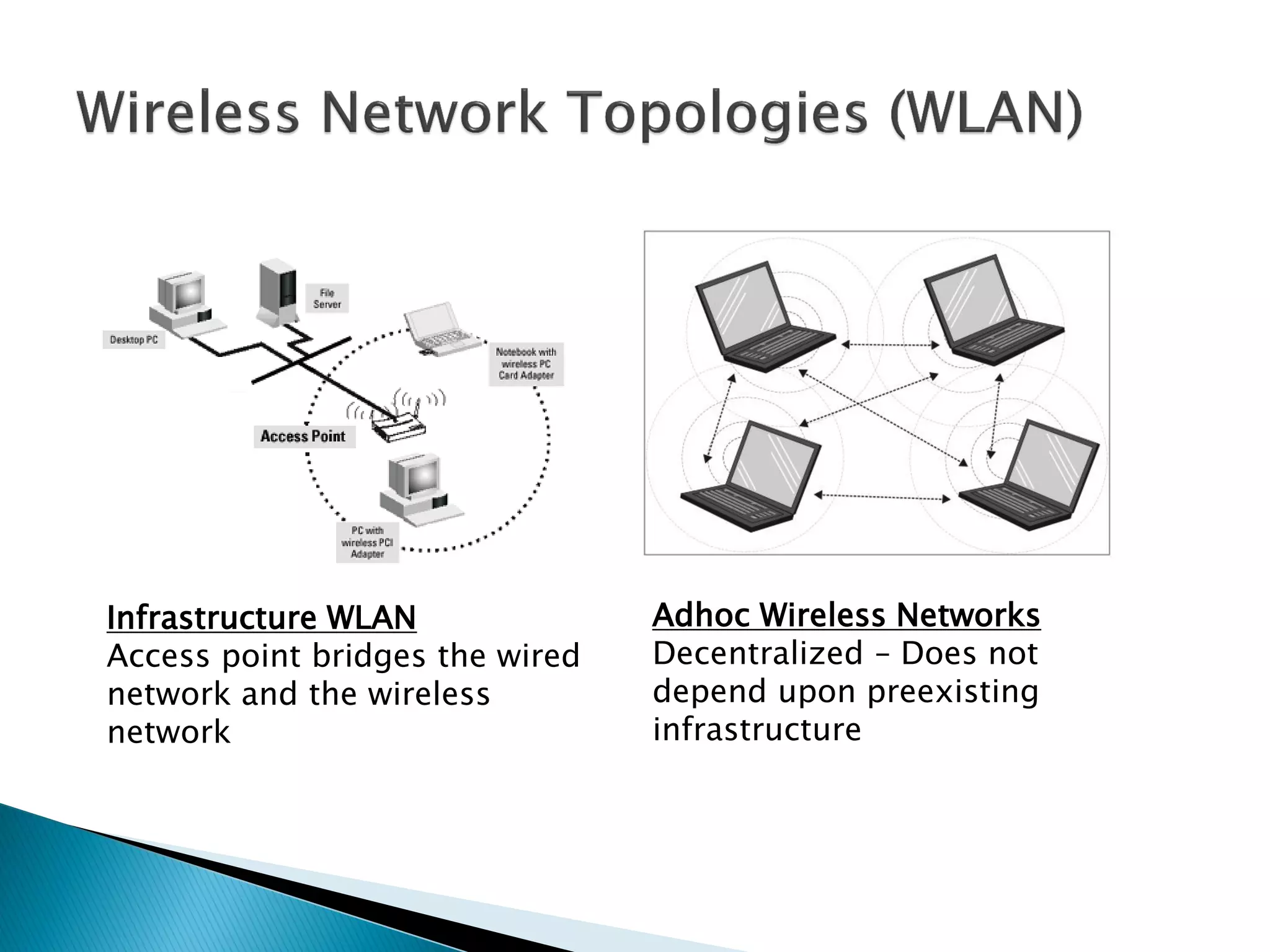
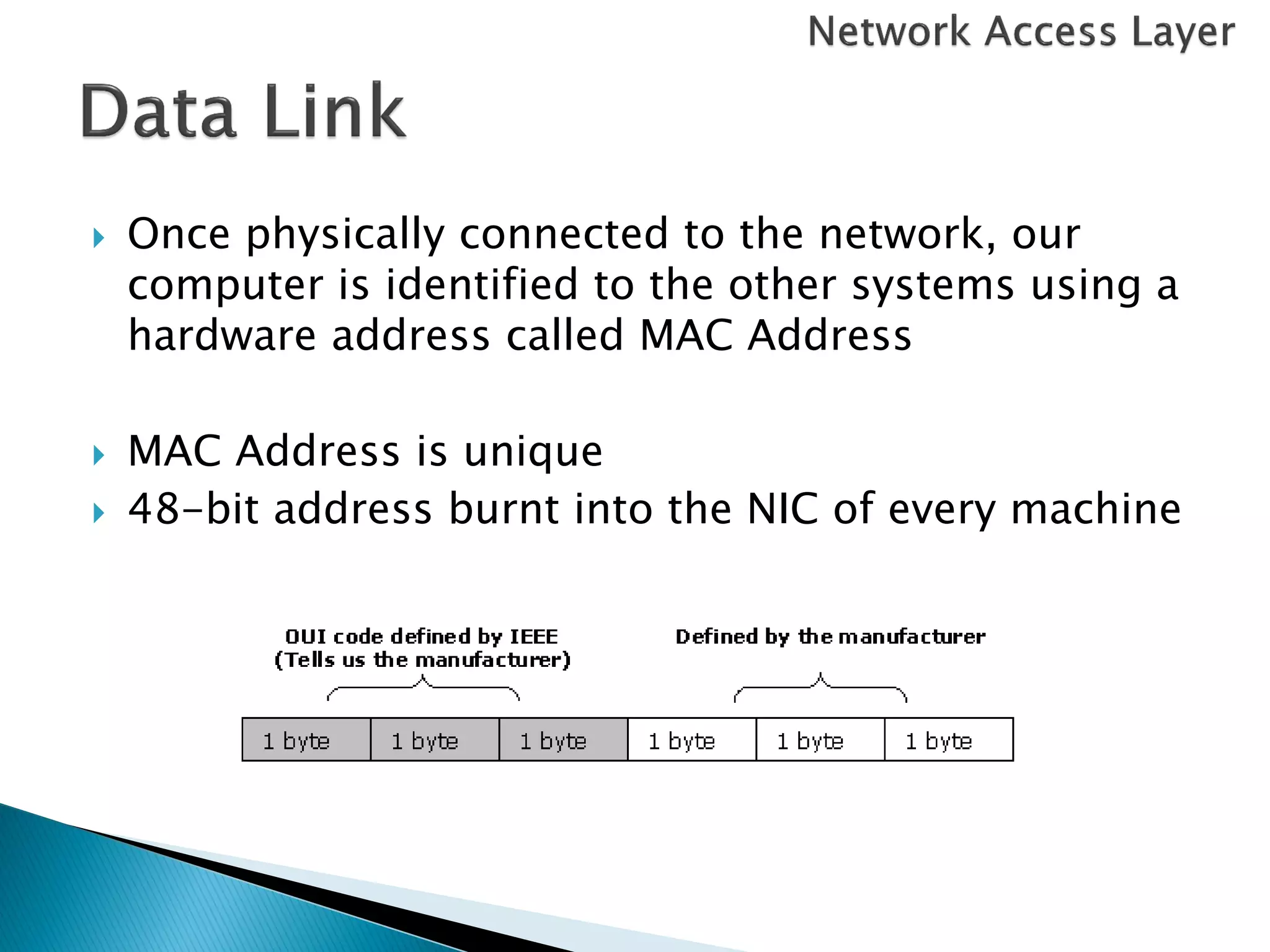
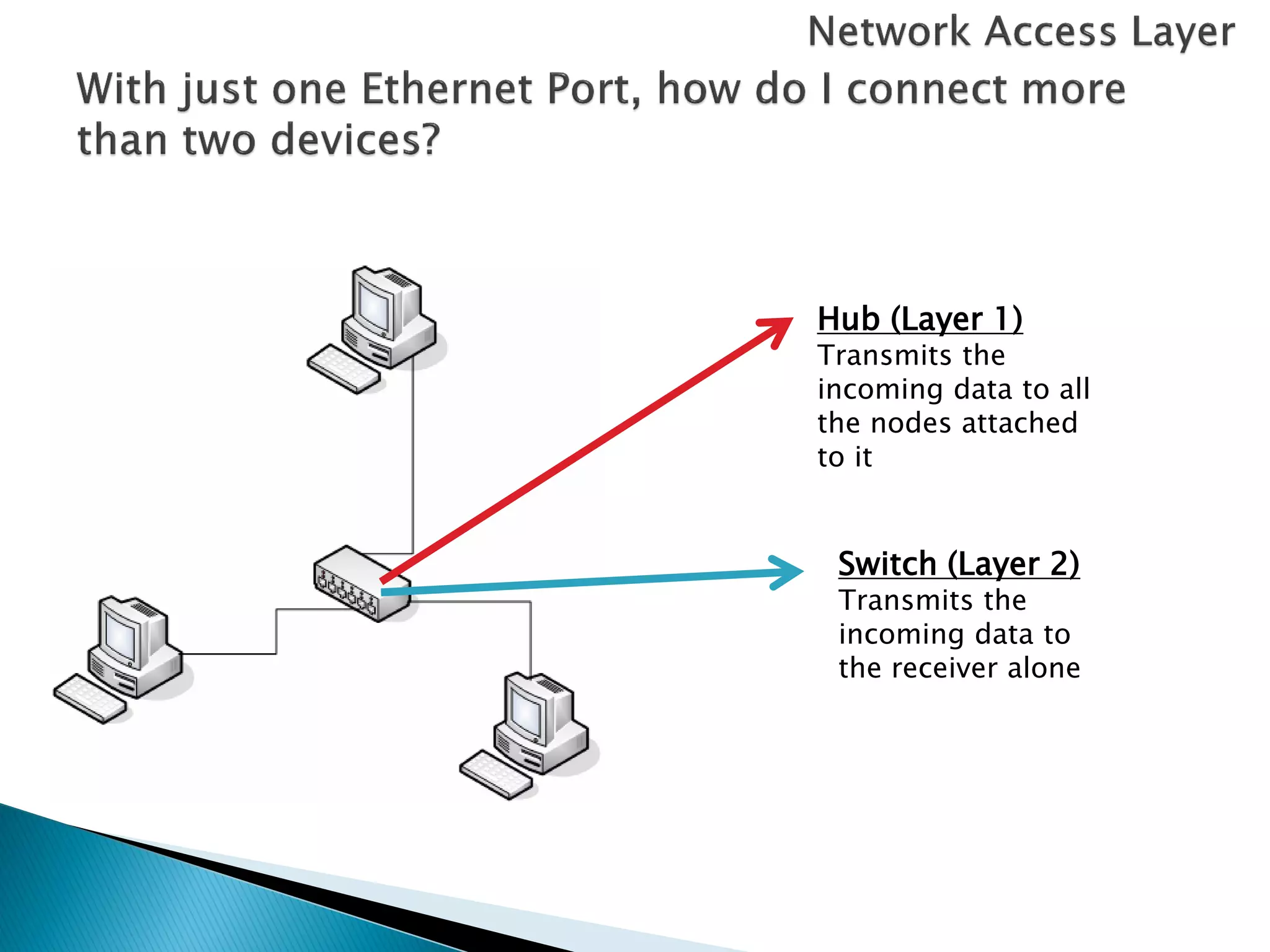
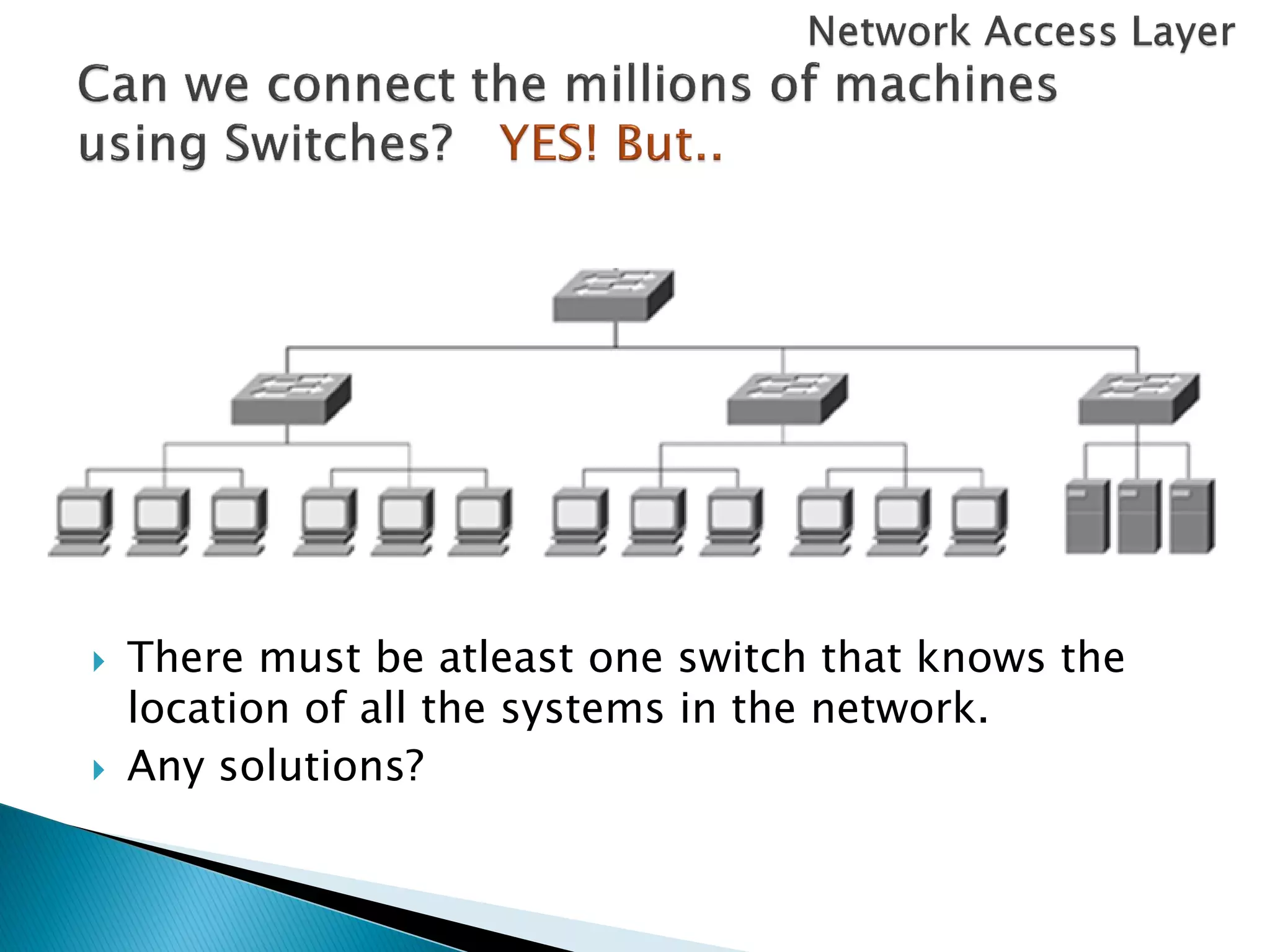
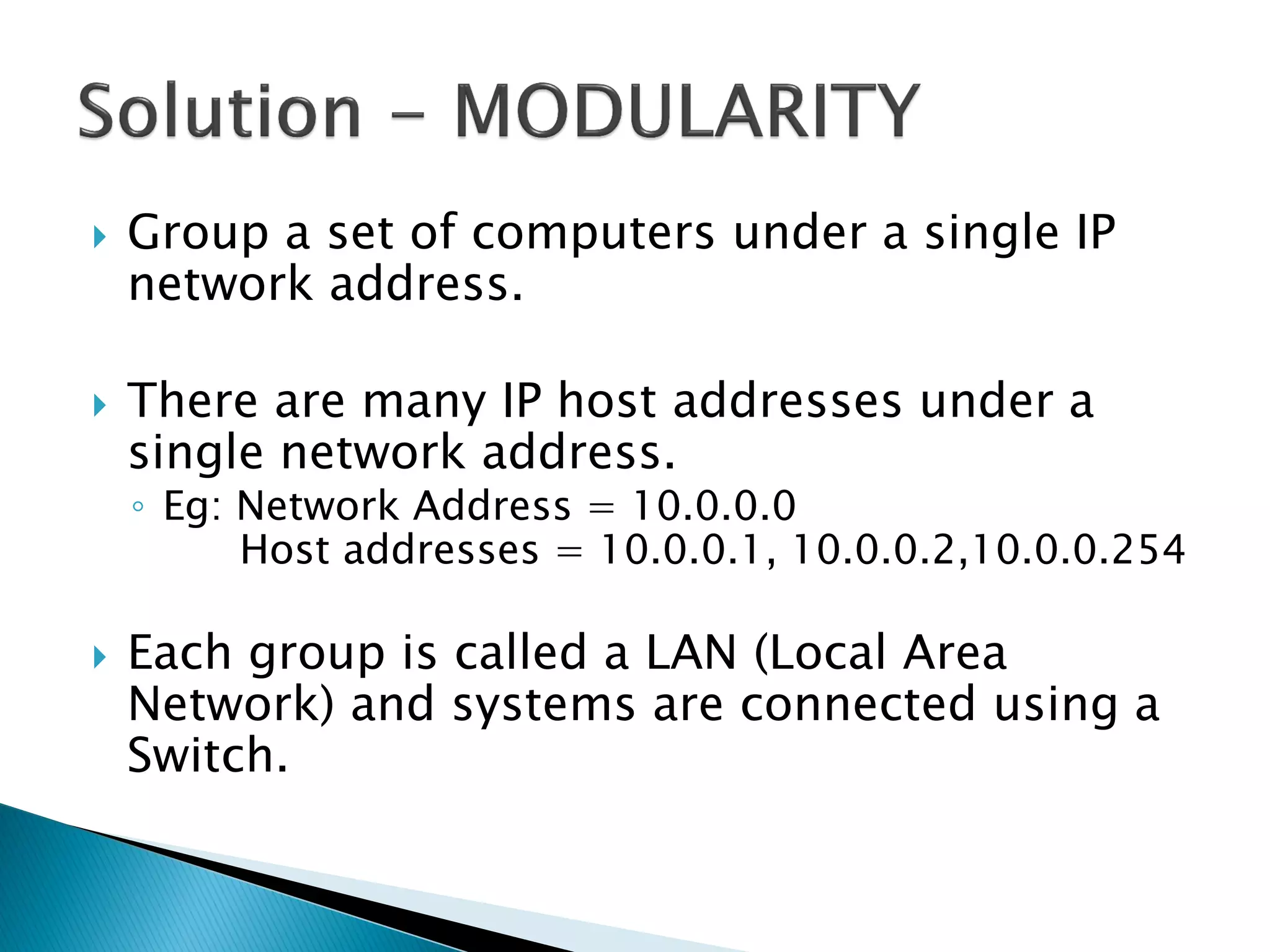
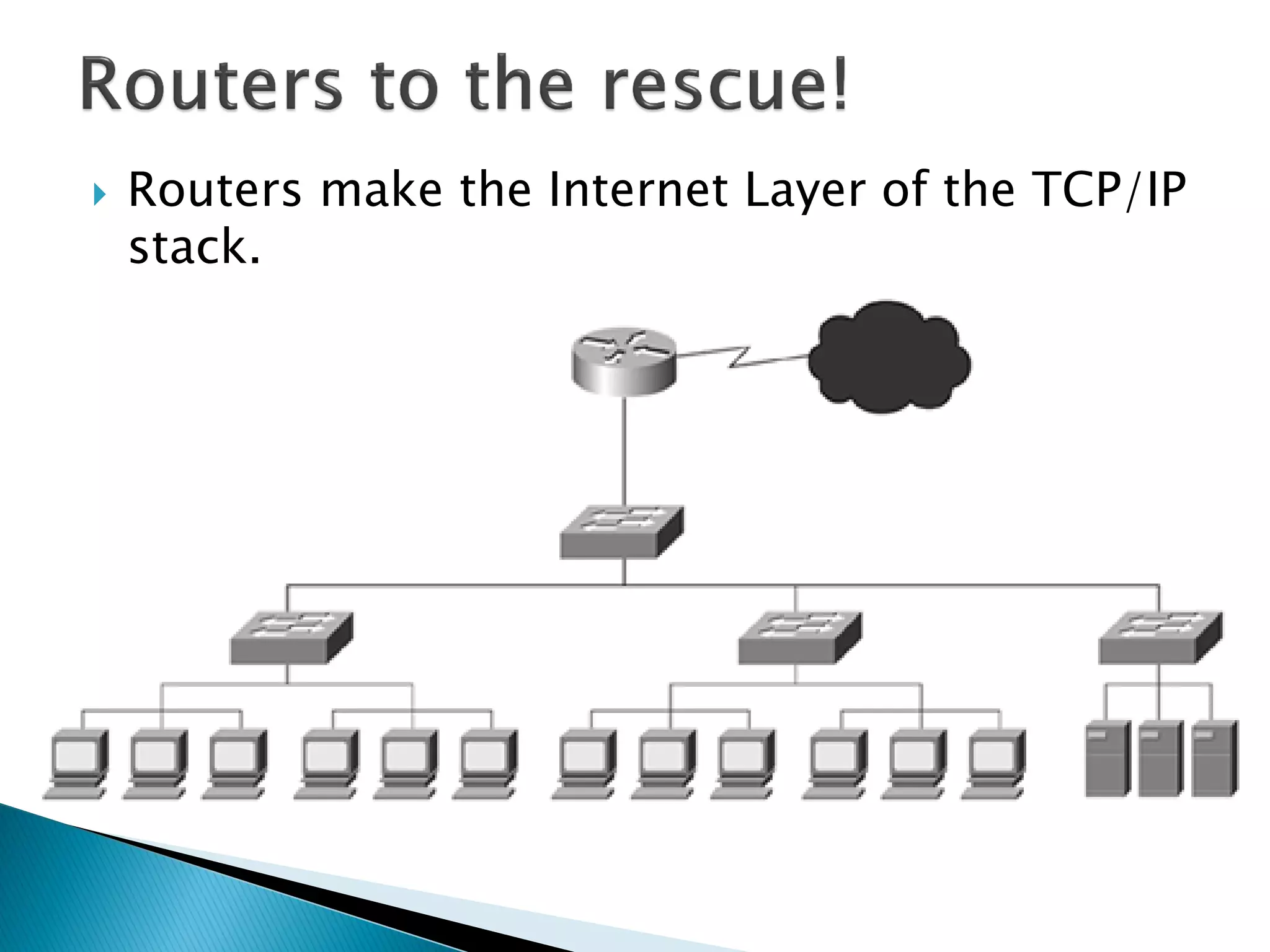
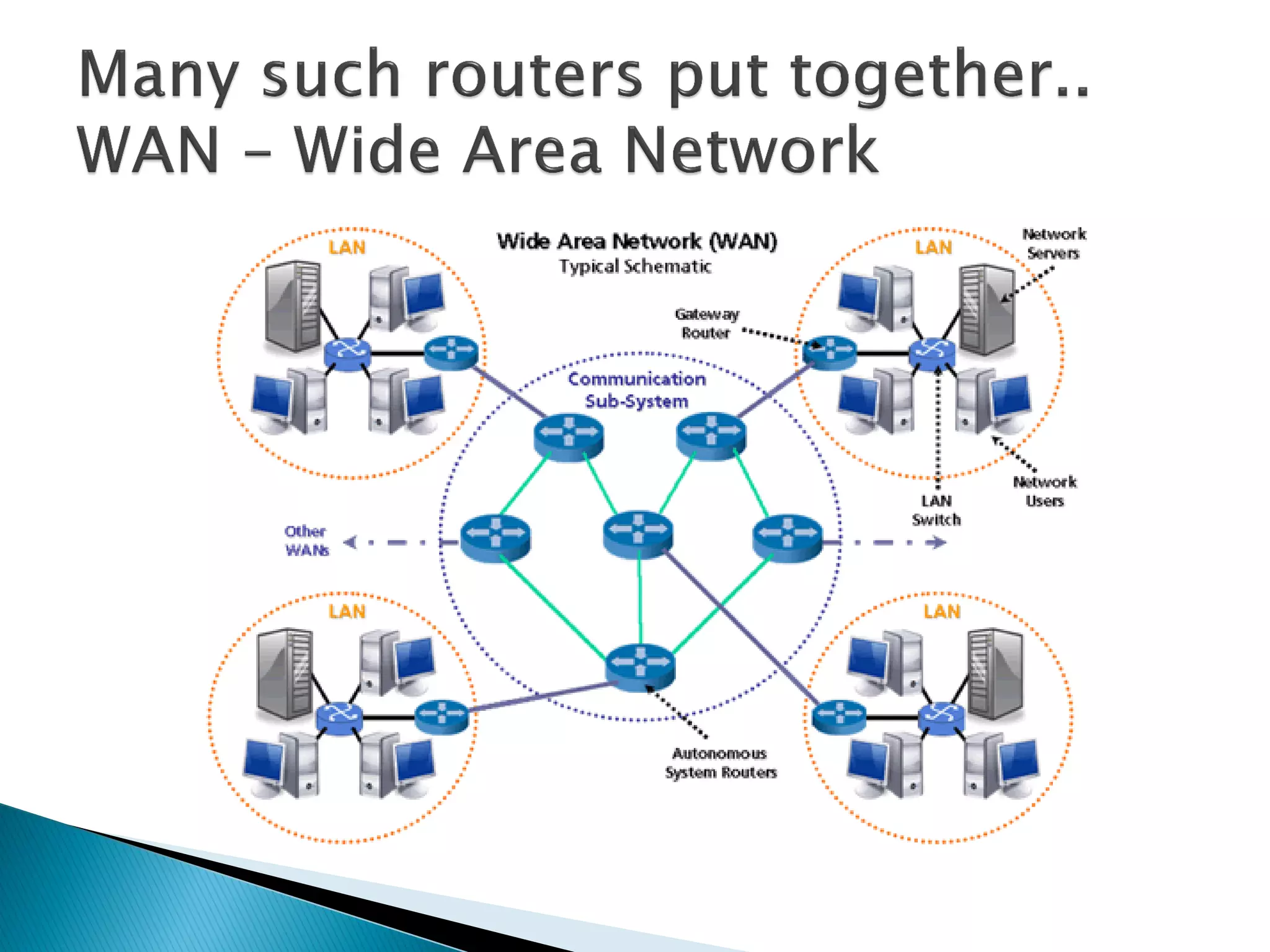
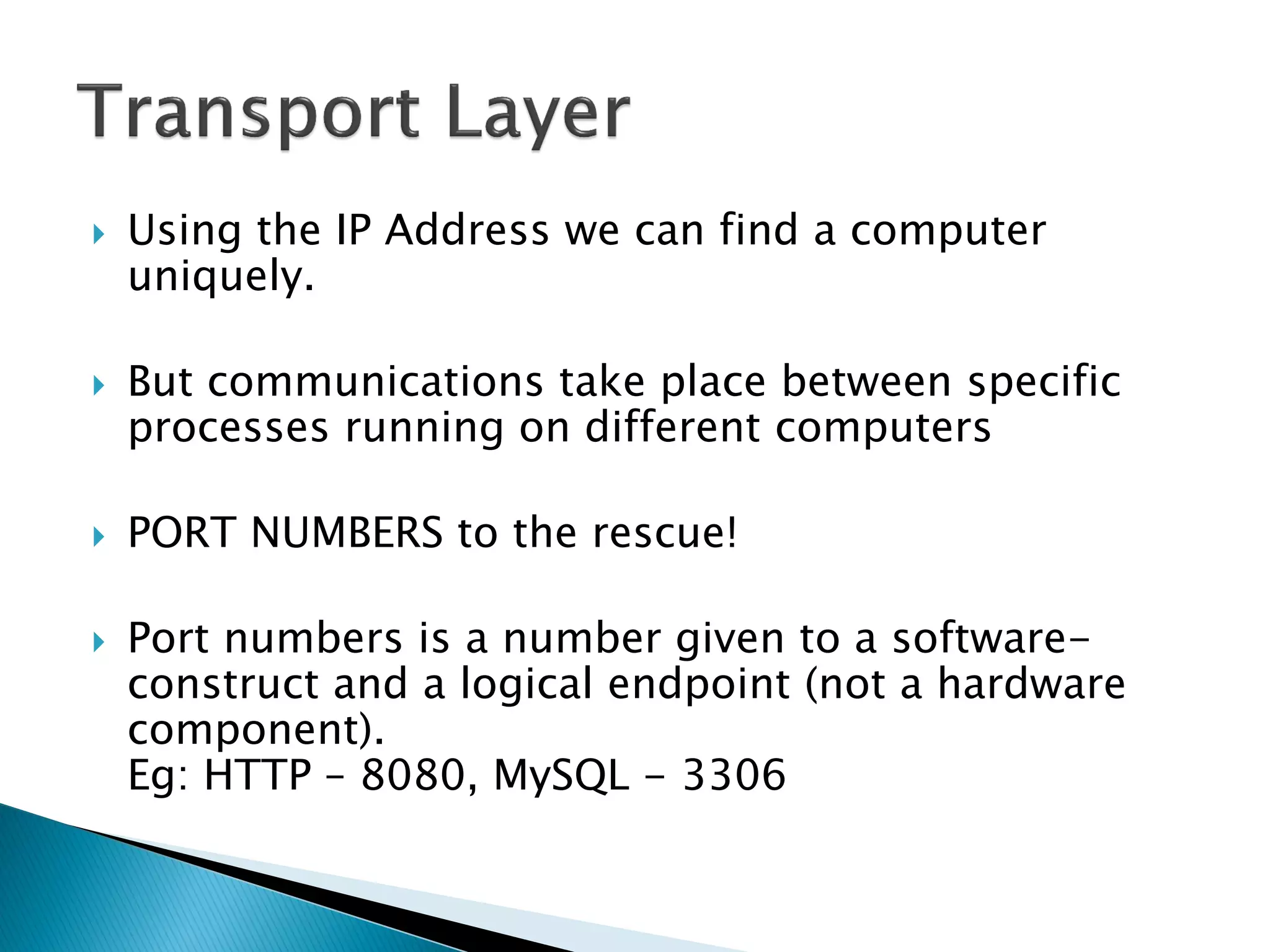
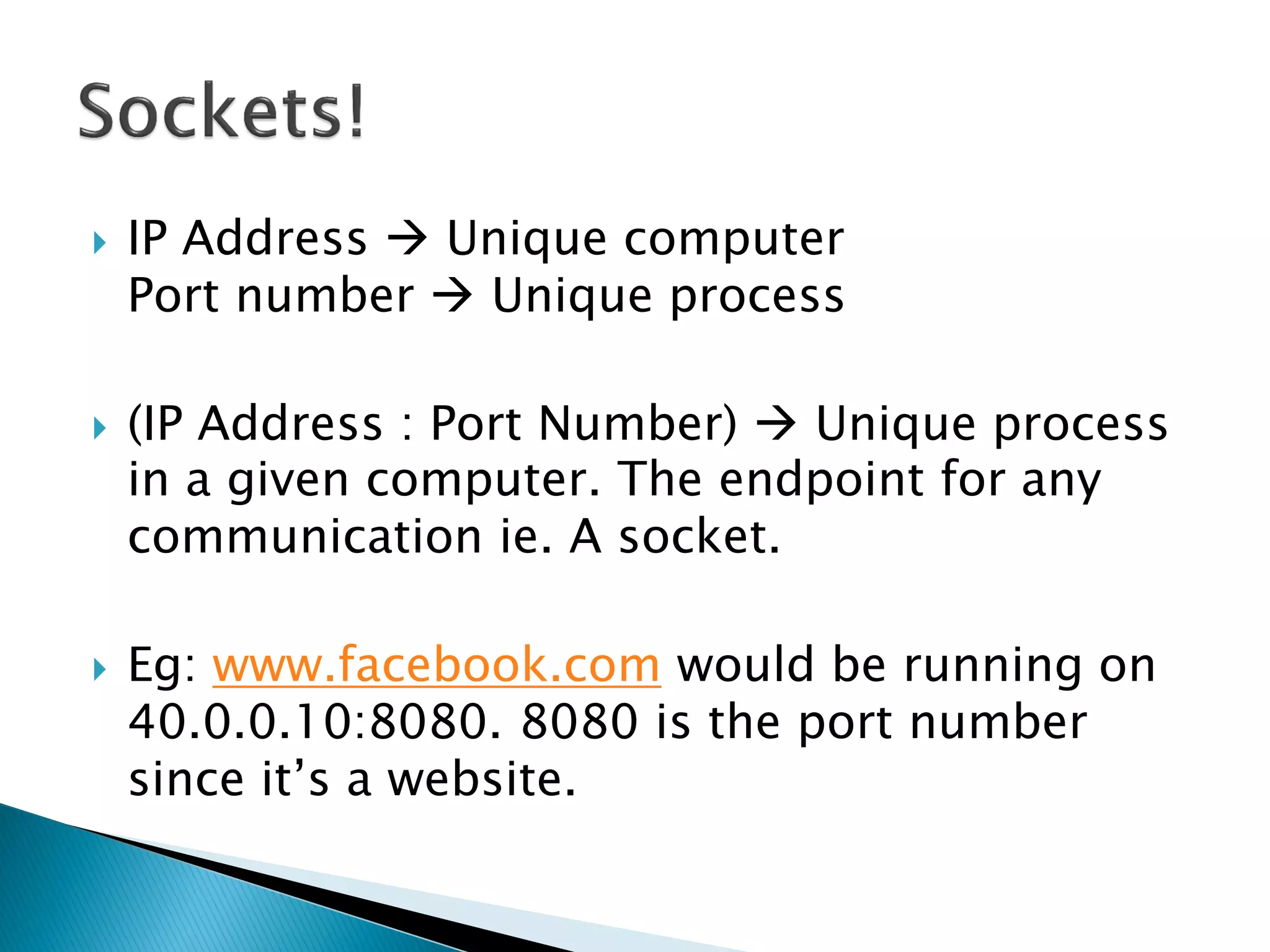
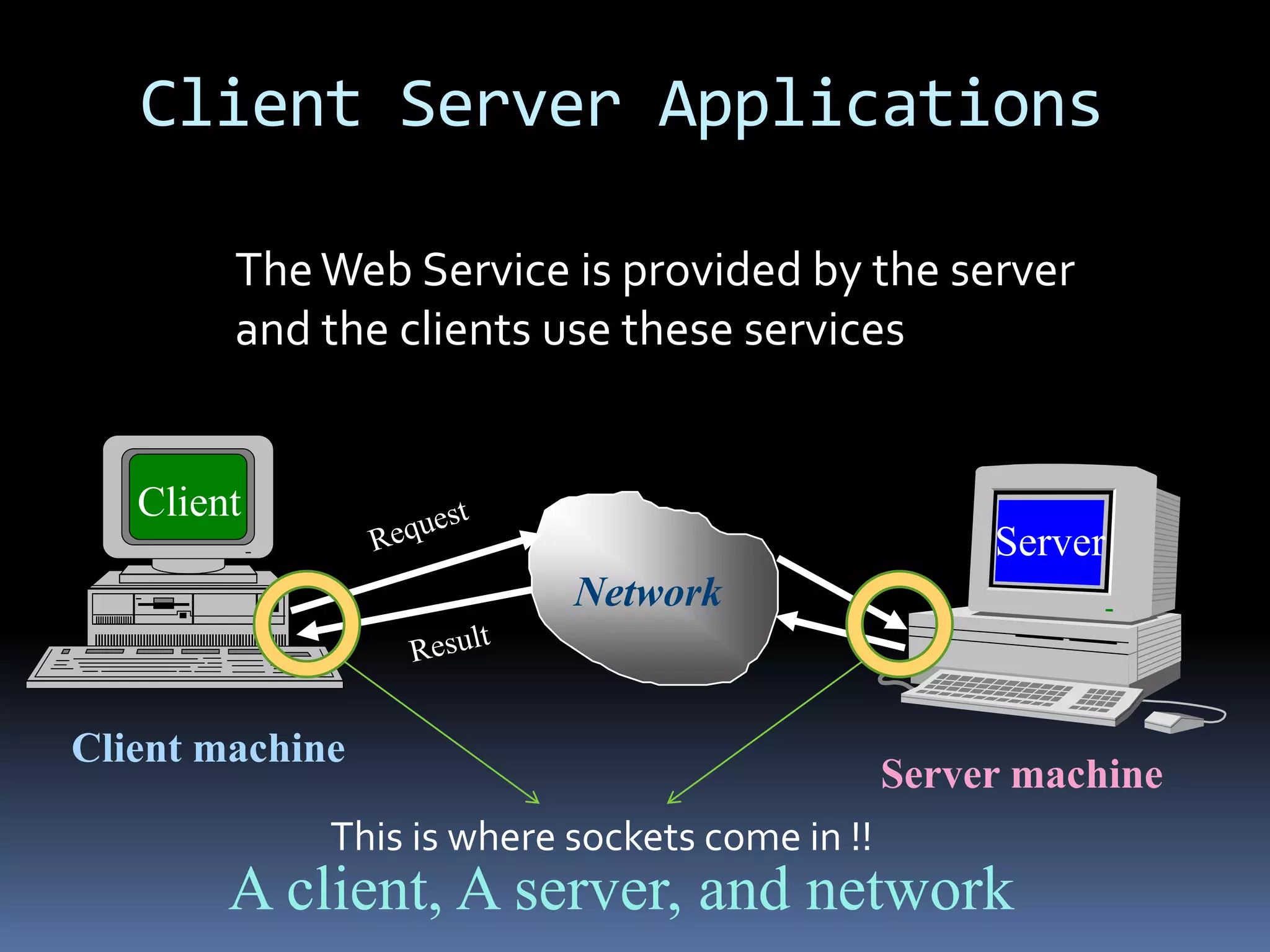
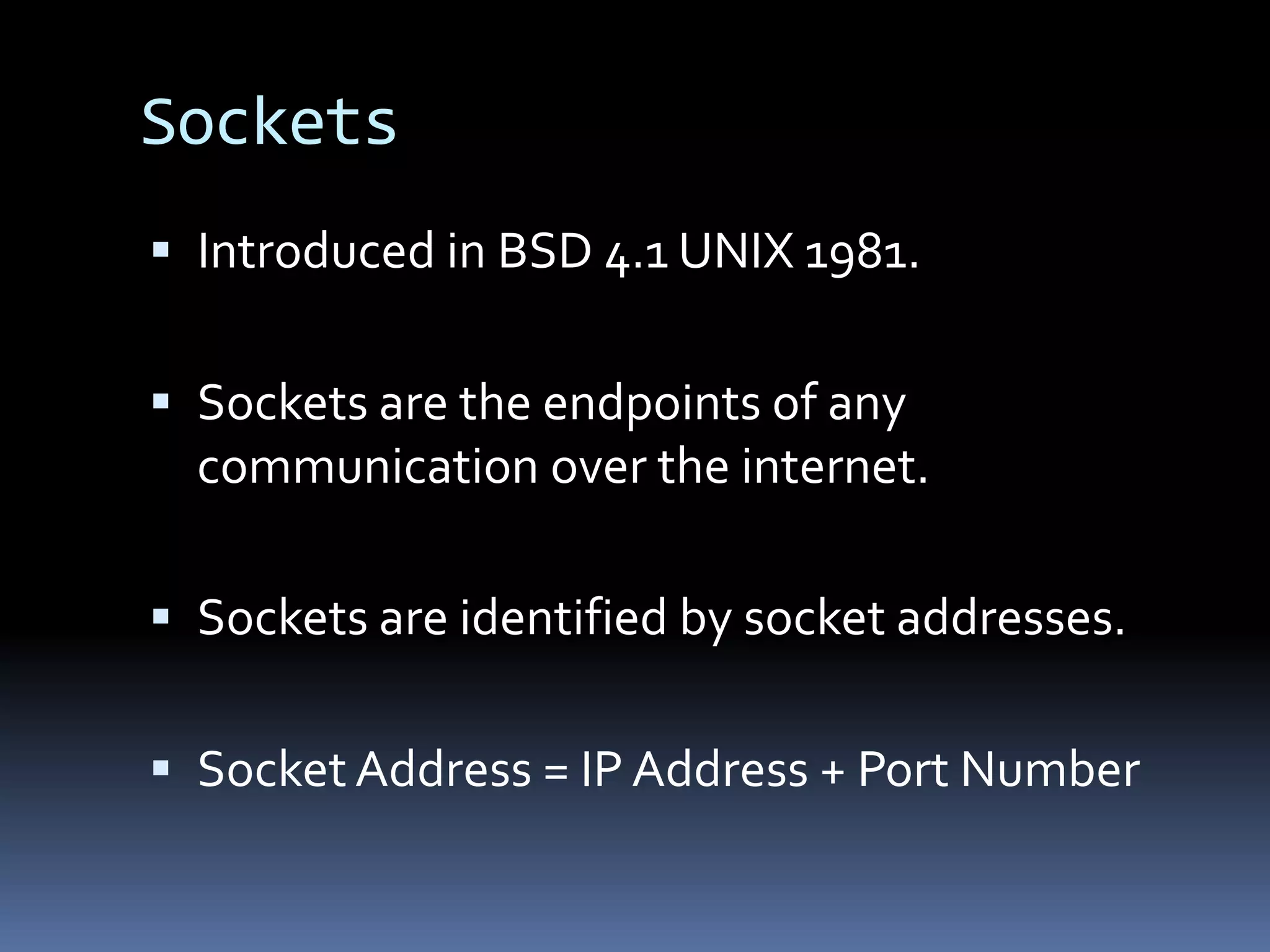
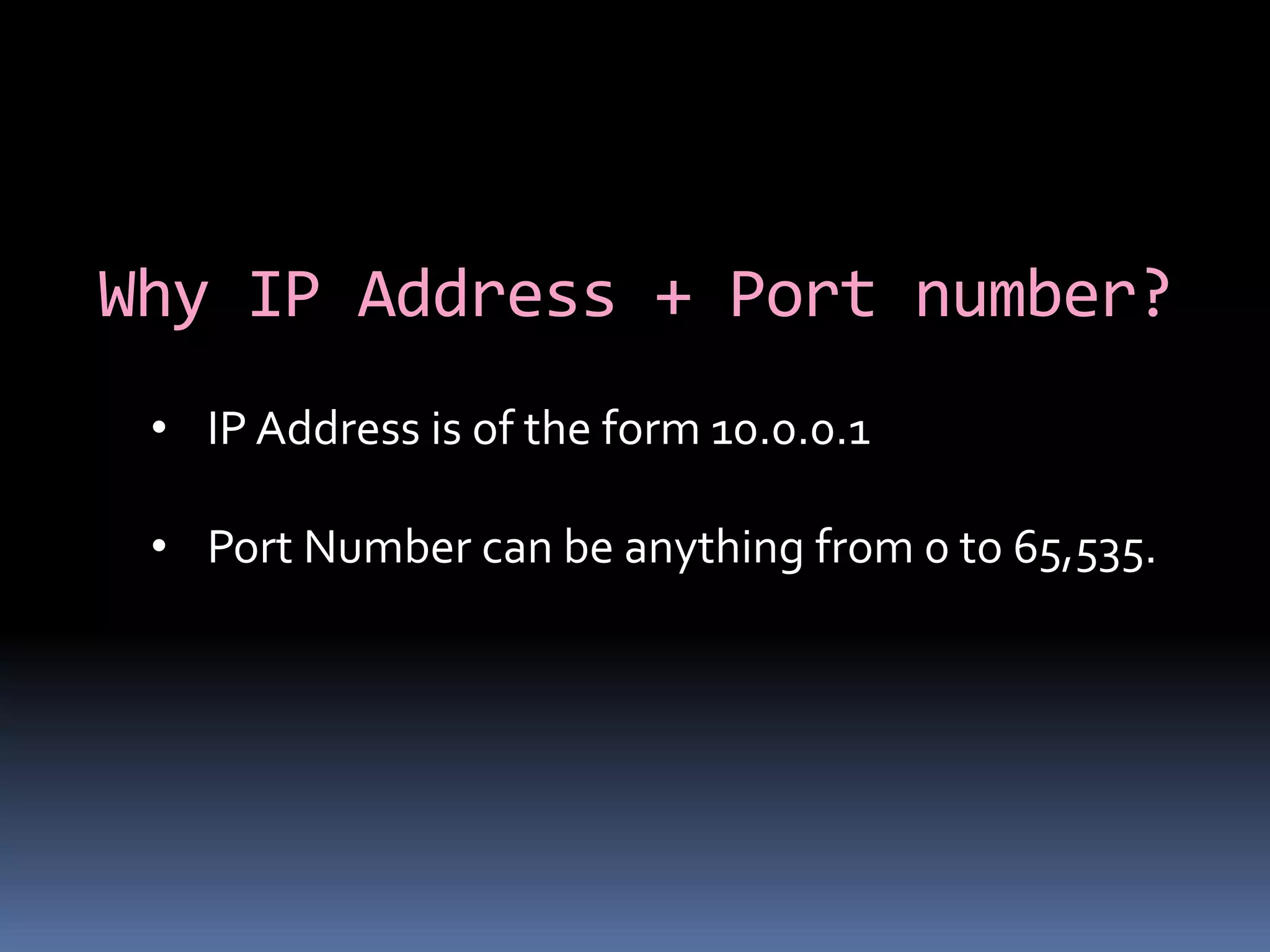
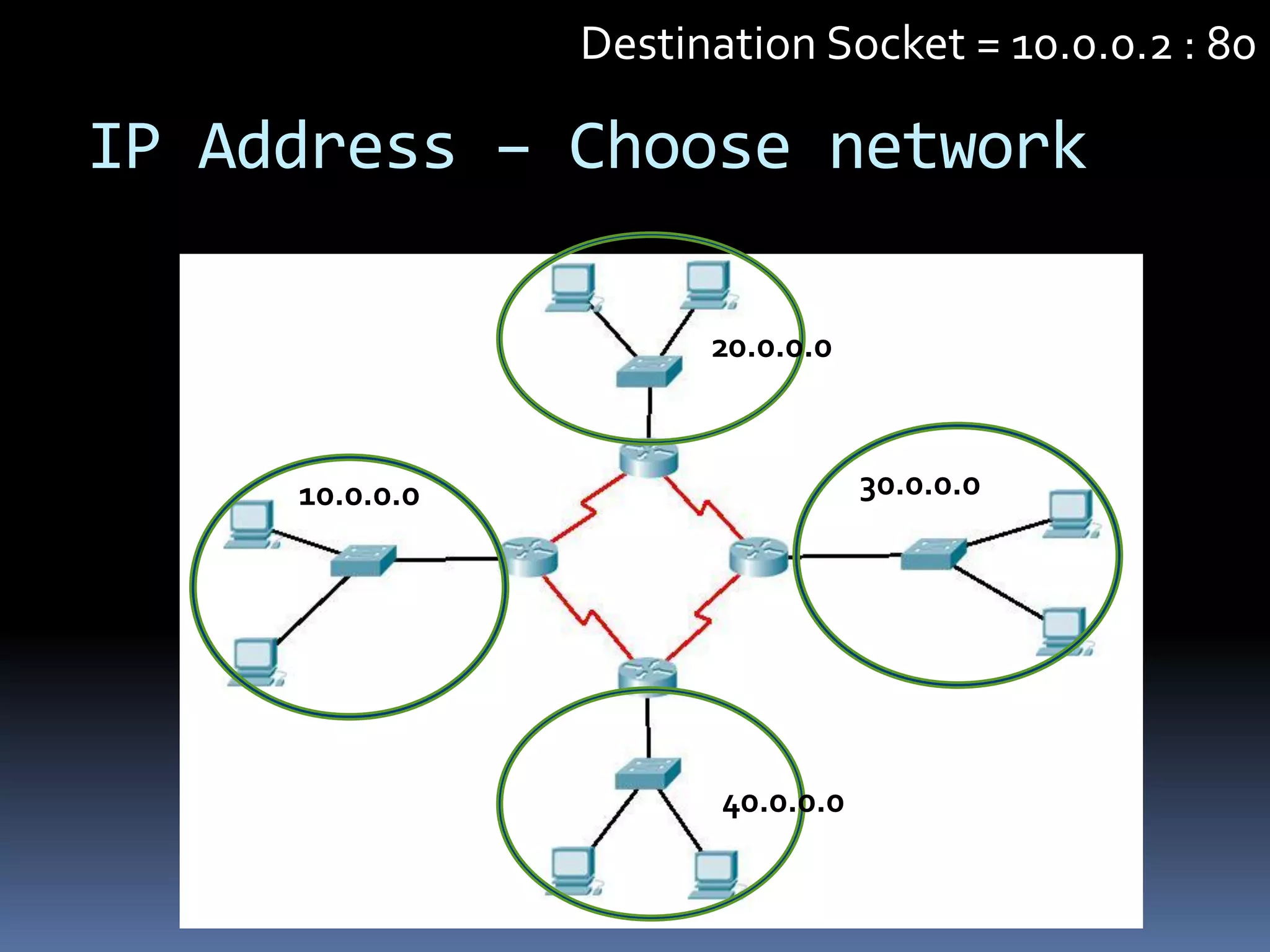
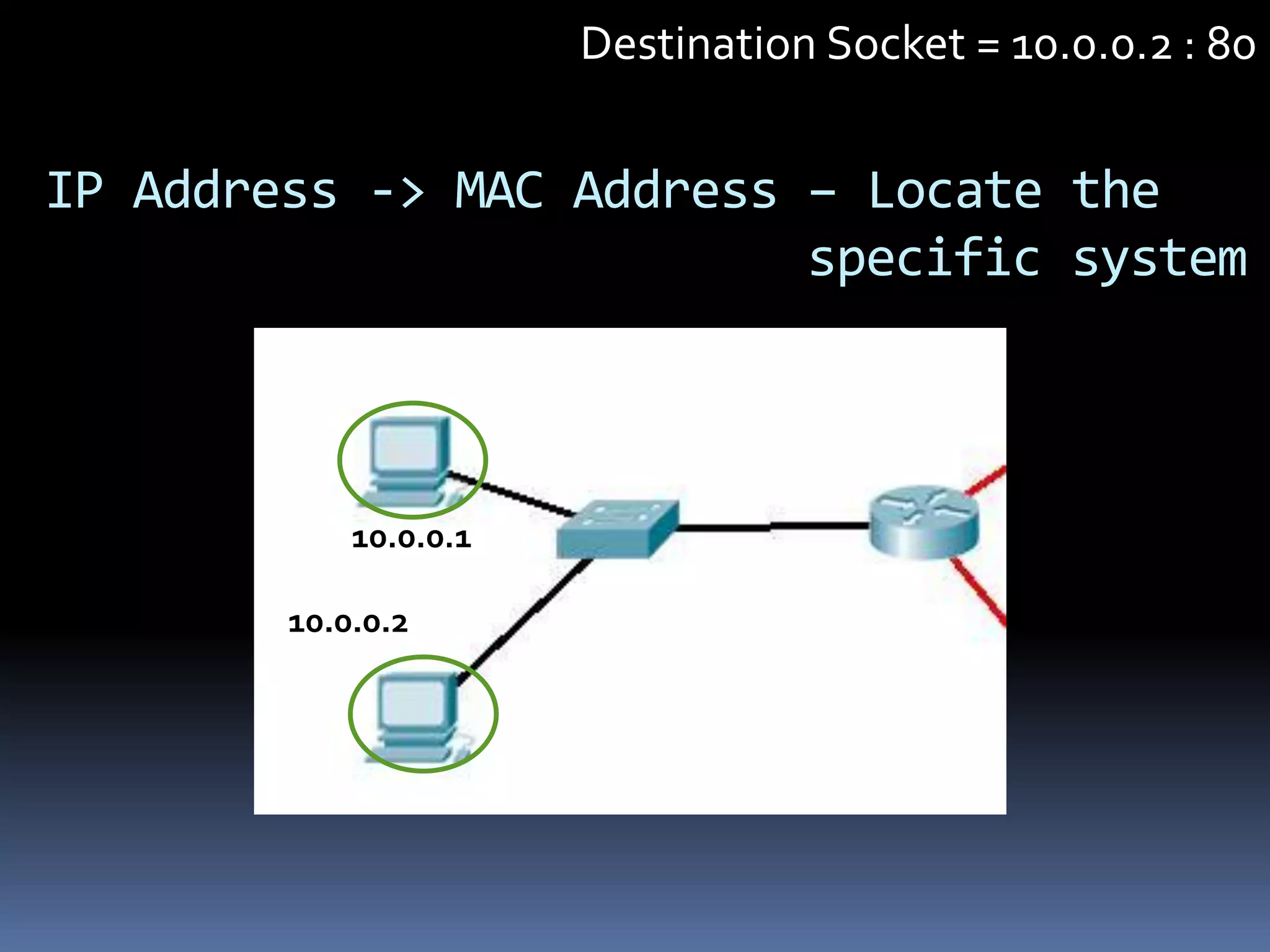
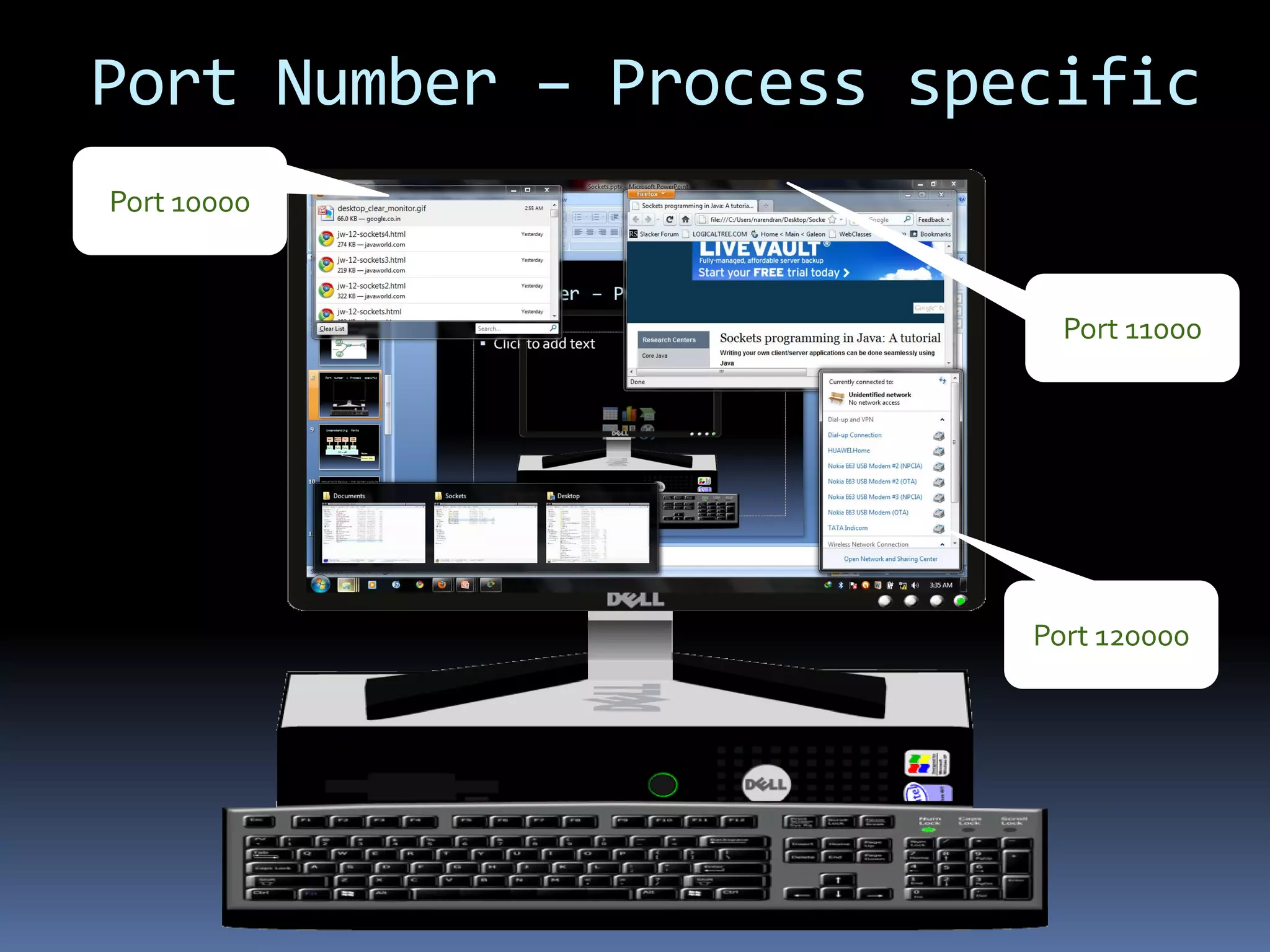
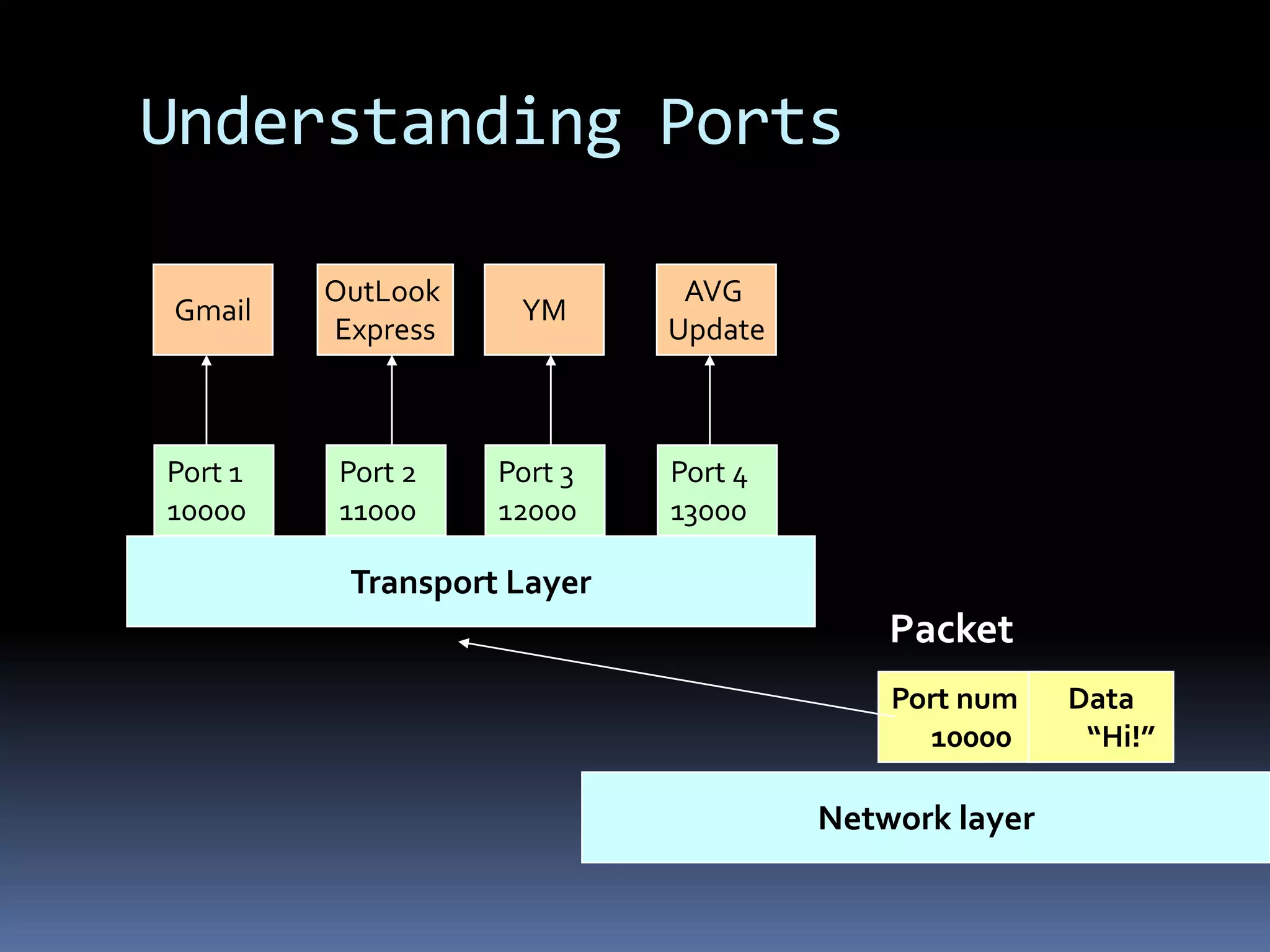

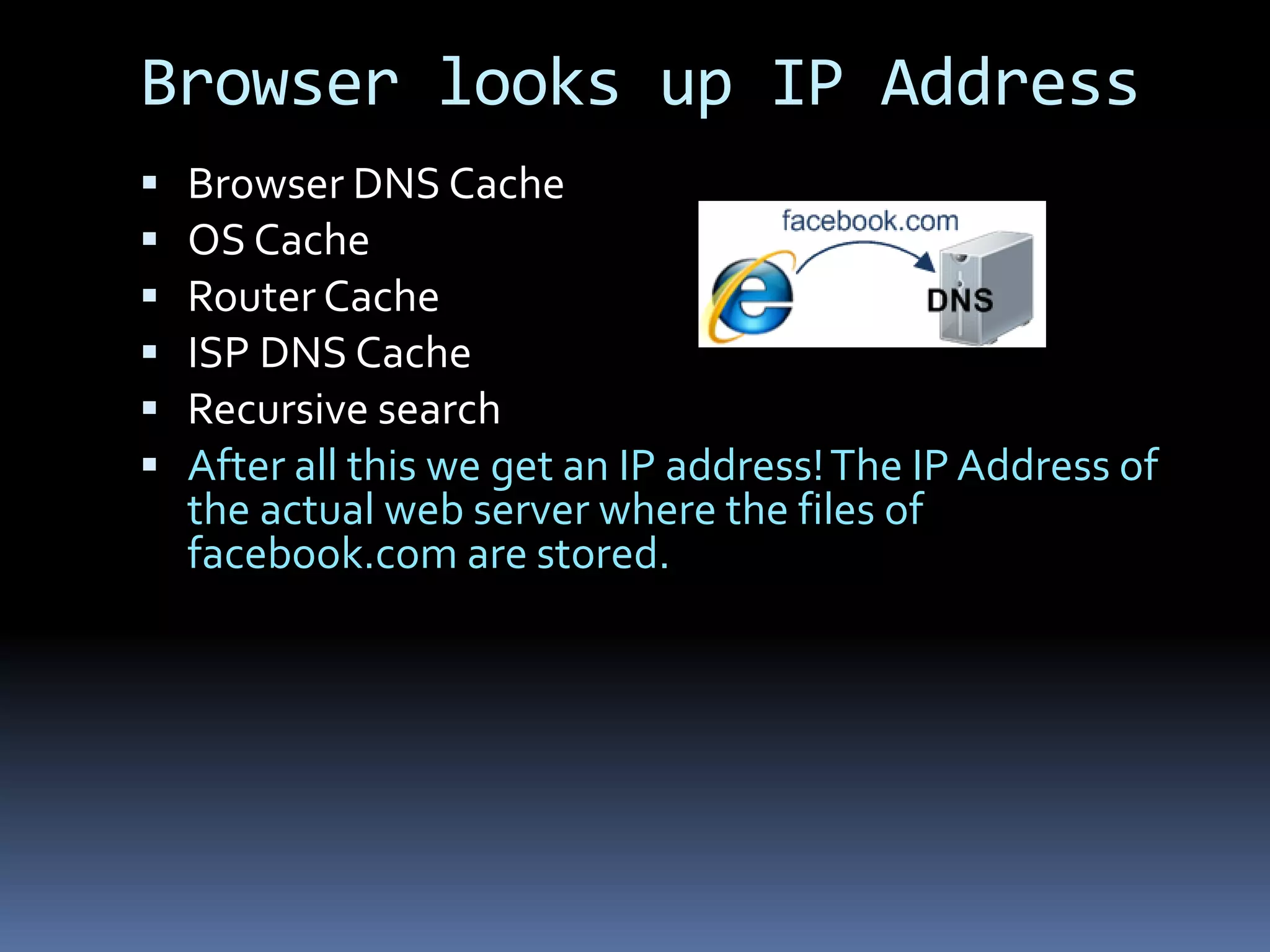
![Browser sends a HTTP request to the
webserver
Browser cache?! – Not possible. Facebook is
dynamic
GET http://facebook.com/ HTTP/1.1
Accept: application/x-ms-application, image/jpeg, application/xaml+xml,
[...]
User-Agent: Mozilla/4.0 (compatible; MSIE 8.0; Windows NT 6.1; WOW64;
[...]
Accept-Encoding: gzip, deflate
Connection: Keep-Alive Host: facebook.com
Cookie: datr=1265876274-[...]; locale=en_US; lsd=WW[...]; c_user=2101[...]](https://image.slidesharecdn.com/understandingcomputernetworks-120206072304-phpapp01/75/Understanding-computer-networks-27-2048.jpg)
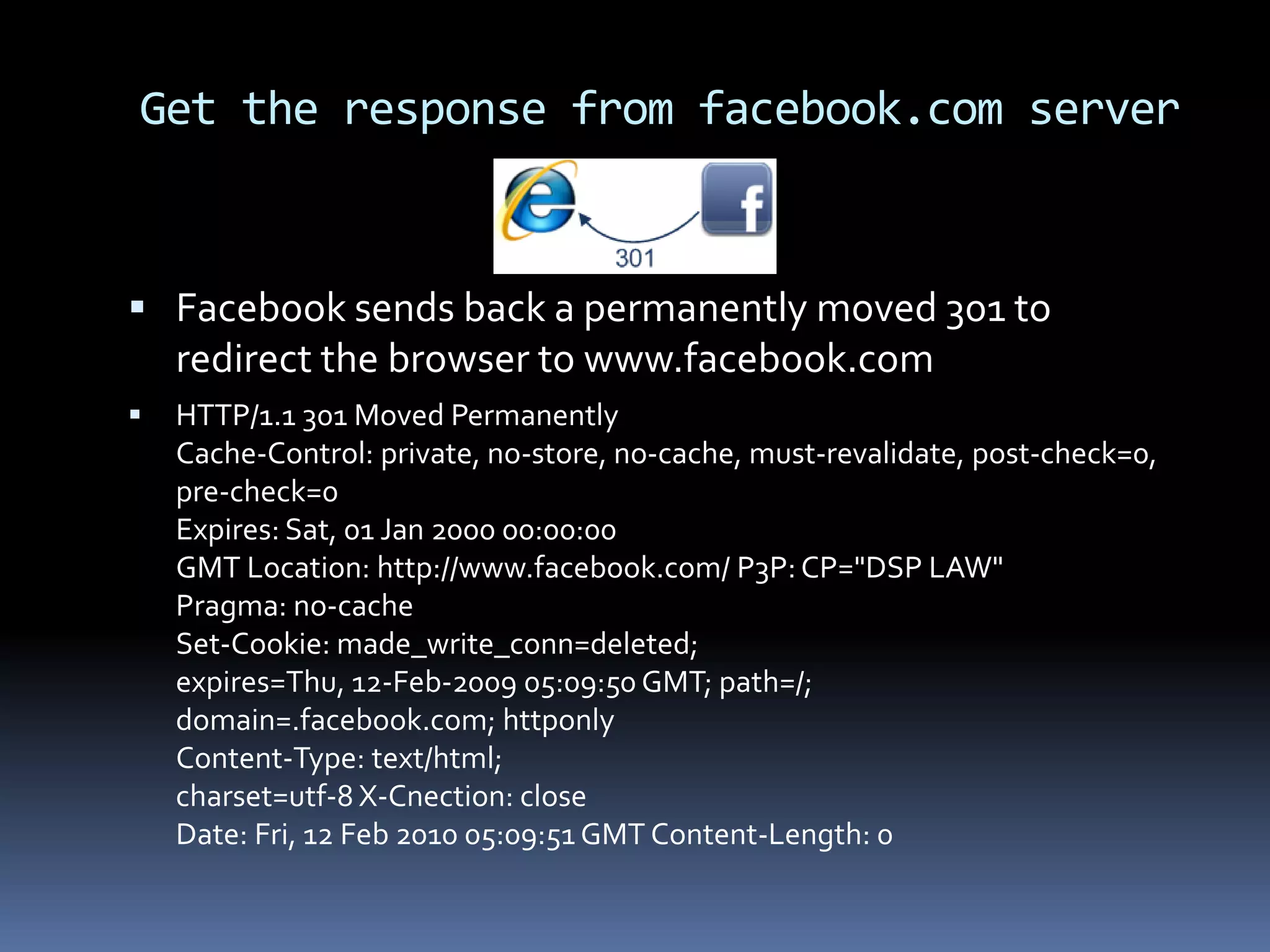
![Browser takes the redirection
Browser gets the actual IP address and makes a HTTP
request to that address.
GET http://www.facebook.com/ HTTP/1.1
Accept: application/x-ms-application, image/jpeg,
application/xaml+xml, [...]
Accept-Language: en-US
User-Agent: Mozilla/4.0 (compatible; MSIE 8.0; Windows NT 6.1;
WOW64; [...]
Accept-Encoding: gzip, deflate
Connection: Keep-Alive
Cookie: lsd=XW[...]; c_user=21[...]; x-referer=[...]
Host: www.facebook.com](https://image.slidesharecdn.com/understandingcomputernetworks-120206072304-phpapp01/75/Understanding-computer-networks-29-2048.jpg)
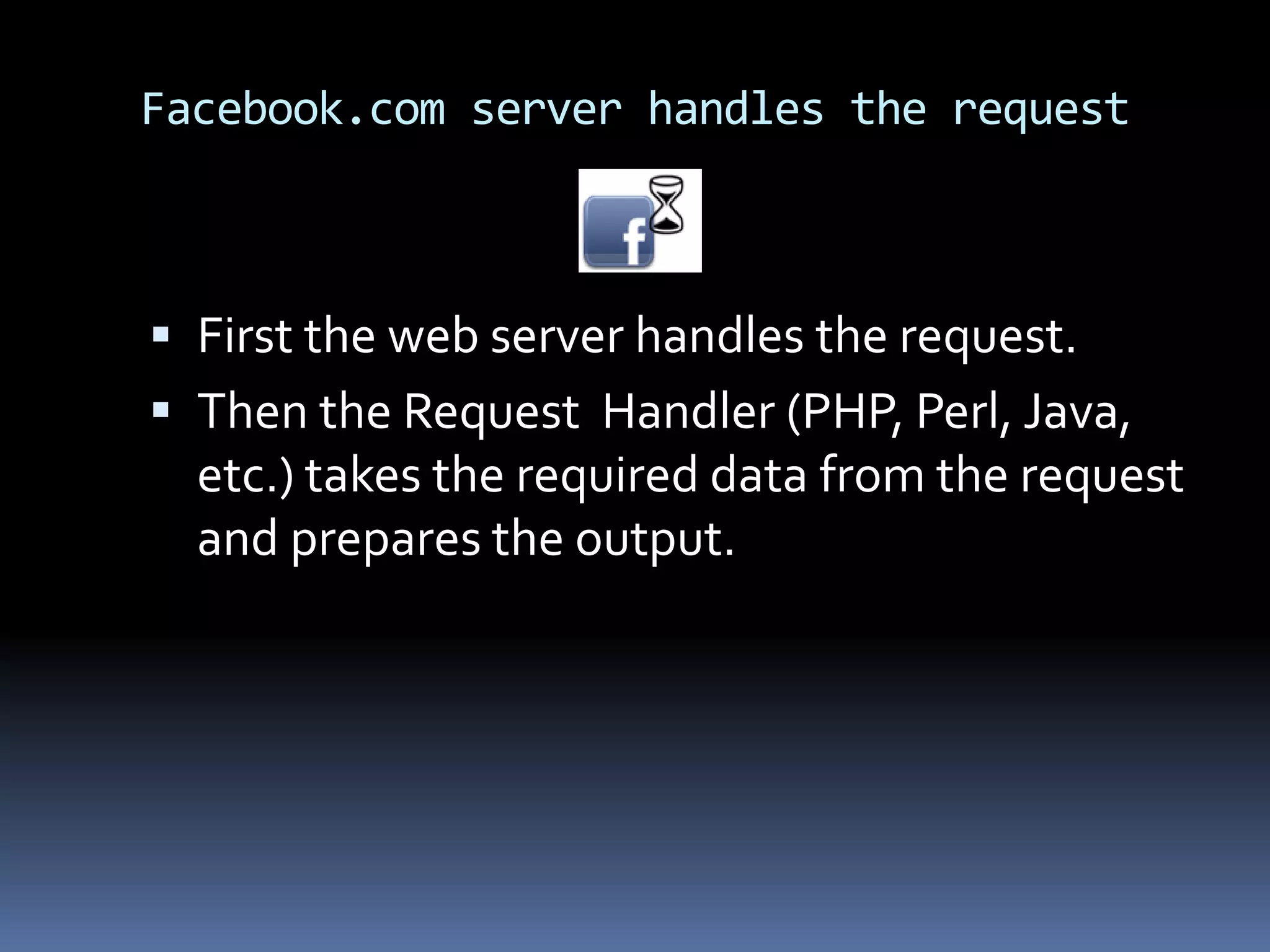
![Facebook.com sends the requested web page
HTTP/1.1 200 OK
Cache-Control: private, no-store, no-cache, must-revalidate, post-
check=0, pre-check=0
Expires: Sat, 01 Jan 2000 00:00:00 GMT P3P: CP="DSP LAW"
Pragma: no-cache Content-Encoding: gzip
Content-Type: text/html;
charset=utf-8 X-Cnection: close
Transfer-Encoding: chunked
Date: Fri, 12 Feb 2010 09:05:55 GMT
(Compressed data)2b3��������T�n�@����[...]](https://image.slidesharecdn.com/understandingcomputernetworks-120206072304-phpapp01/75/Understanding-computer-networks-31-2048.jpg)
